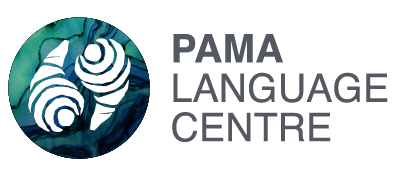Wik-Mungkan Past Recording and Maintenance
There is an extensive collection of texts and reference materials in Wik-Mungkan including Bible translations by the Summer Institute of Linguistics. The Wik-Mungkan bible is available online at:
http://aboriginalbibles.org.au/Mungkan/Conc/root.htm
The following list includes a selection of reference materials relating to Wik-Mungkan and the Wik Region.
Adams, E. J. (1970). Changes in Wikmunkan kinship structures: An introductory analysis.
Martin, D. F. (1993). Autonomy and relatedness: An ethnography of Wik people of Aurukun, Western Cape York Peninsula.
Martin, D. F. (2002). Counting the Wik: The 2001 Census in Aurukun, western Cape York Peninsula. In D. F. Martin, F. Morphy, W. G. Sanders, & J. Taylor (Eds.), Making sense of the Census: Observations of the 2001 enumeration in remote Aboriginal Australia (pp. 13–28). Canberra: Australian National University E Press.
McConnel, U. H. (1930a). The Wik-Munkan Tribe of Cape York Peninsula. Oceania, 1(1), 97–104.
McConnel, U. H. (1930b). The Wik-Munkan Tribe. Part II. Totemism. Oceania, 1(2), 181–205.
McConnel, U. H. (1934). The Wik-Munkan and allied tribes of Cape York Peninsula, N.Q. Oceania, 4(3), 310–367.
McConnel, U. H. (1935). Myths of the Wikmunkan and Wiknatara tribes: Bonefish and Bullroarer totems. Oceania, 6(1), 66–93.
McConnel, U. H. (1945). Wikmunkan Phonetics. Oceania, 15(4), 353–375.
McKnight, D. (1971). Some problems concerning the Wik-mungkan. In R. Needham (Ed.), Rethinking kinship and marriage (pp. 145–180). London: Tavistock Publications.
McKnight, D. (1973). Sexual symbolism of food among the Wik-Mungkan. Man, 8(2), 194–209.
McKnight, D. (1975). Men, women, and other animals: Taboo and purification among the Wik-mungkan. In R. Willis (Ed.), The interpretation of symbolism (p. ??). London: Malaby Press.
McKnight, D. (1981). The Wik-Mungkan concept Nganwi: A study of mystical power and sickness in an Australian tribe. Bijdragen Tot de Taal-, Land- En Volkenkunde / Journal of the Humanities and Social Sciences of Southeast Asia, 137(1), 90–105.
Needham, R. (1962). Genealogy and category in Wikmunkan society. Ethnology, 1(2), 223–264.
Needham, R. (1963). The Wikmunkan mother’s brother: Inference and evidence. The Journal of Teh Polynesian Society, 72(2), 139–151.
Sayers, B. J. (1977). Aboriginal world view and tense, mood and aspect in Wik-Munkan. In ?? (Ed.), Workpapers in Papua New Guinea Languages 20 (pp. 69–85). Ukarumpa: Summer Institute of Linguistics.
Sturmer, J. R. von. (1978). The Wik region: Economy, territoriality and totemism in western Cape York Peninsula, north Queensland.
Sutton, P. (1978). Wik: Aboriginal society, territory and language at Cape Keerweer, Cape York Peninsula, Australia.
Sutton, P. (2002). On the translatability of placenames in the Wik region, Cape York Peninsula. In L. Hercus, F. Hodges, & J. Simpson (Eds.), The land is a map: Placenames of Indigenous origin in Australia. Canberra: Pandanus Books.
Thomson, D. F. (1936). Fatherhood in the Wik Monkan tribe. American Anthropologist, 38(3), 374–393.
Thomson, D. F. (1946). Names and naming in the Wik Monkan tribe. The Journal of the Royal Anthropological Institute of Great Britain and Ireland, 76(2), 157–168.
